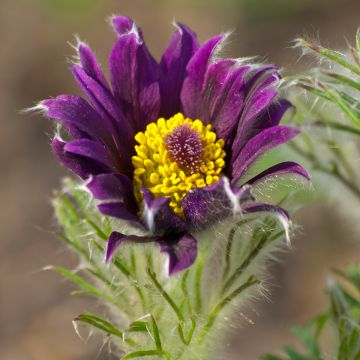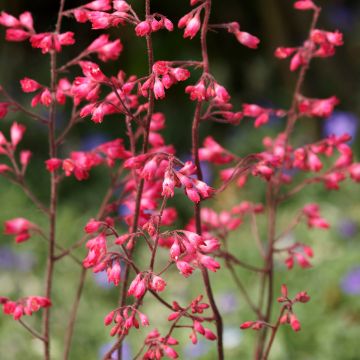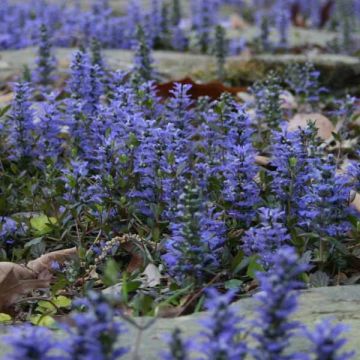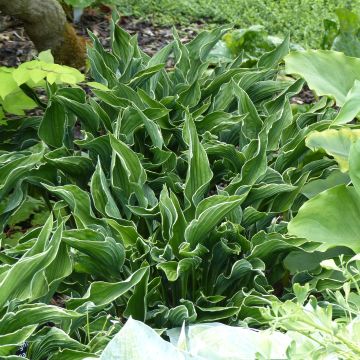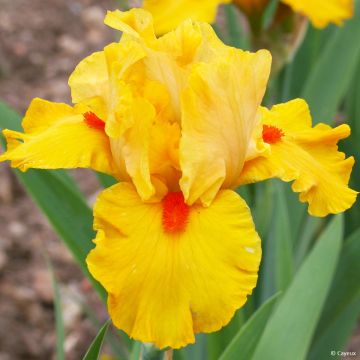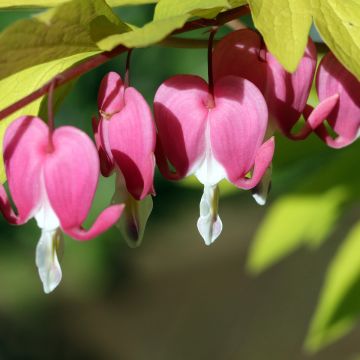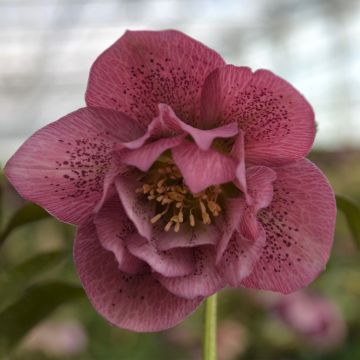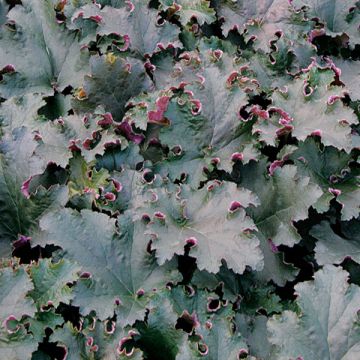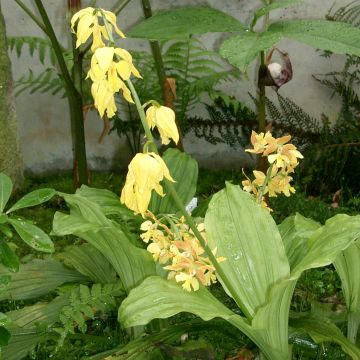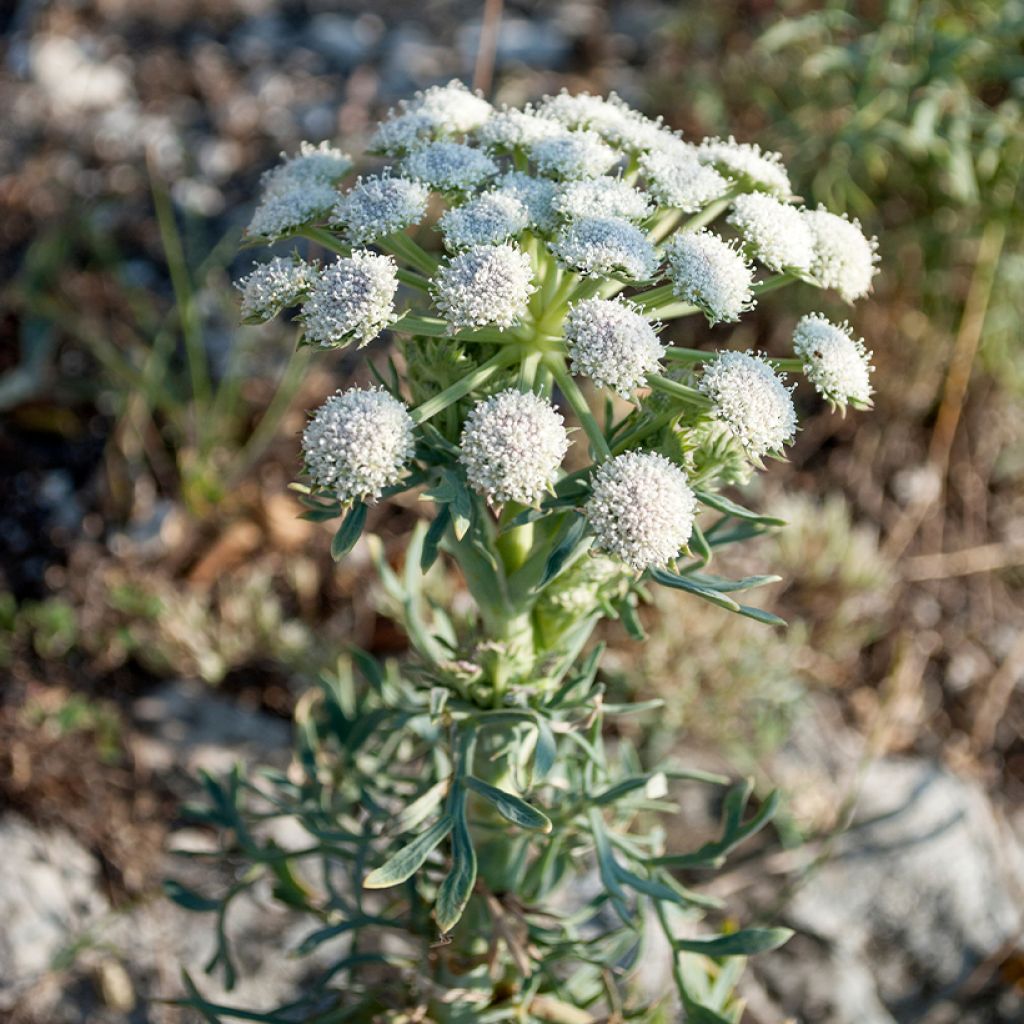

Seseli gummiferum
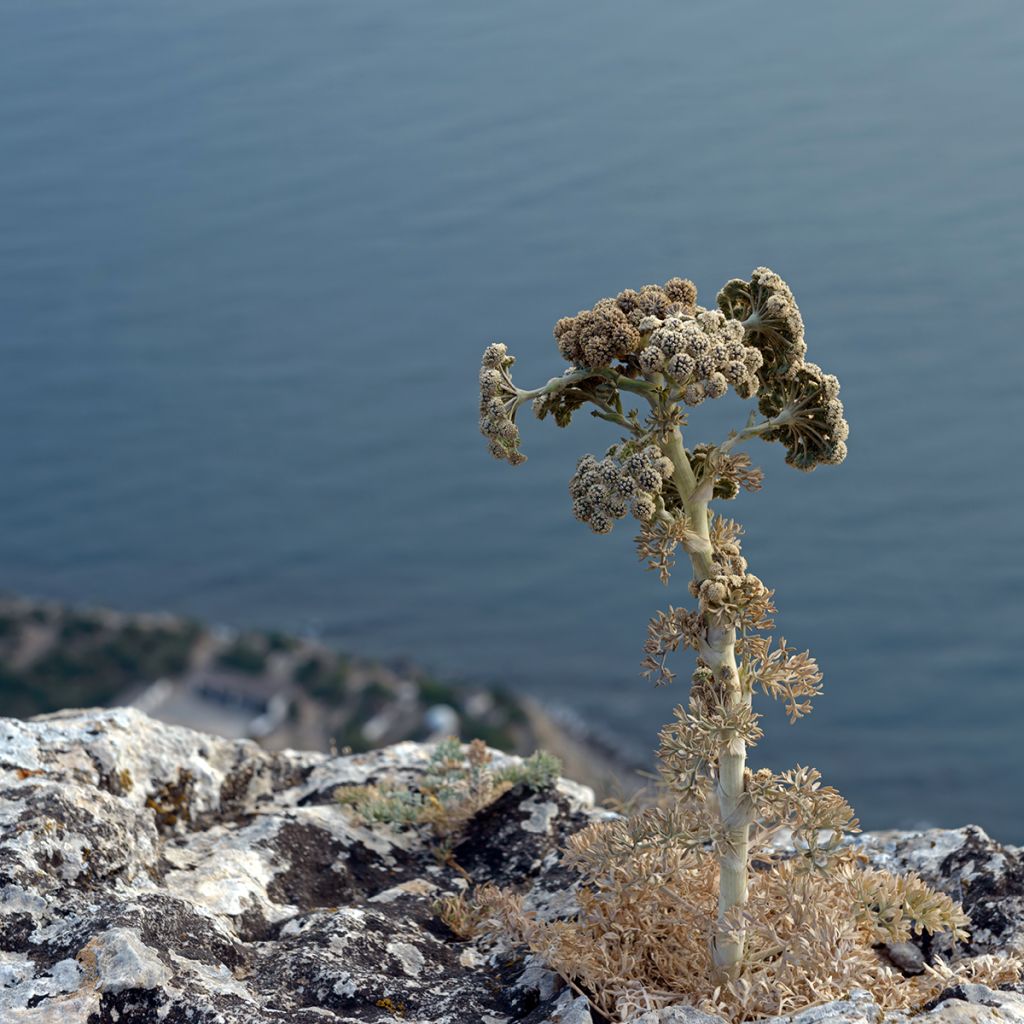

Seseli gummiferum
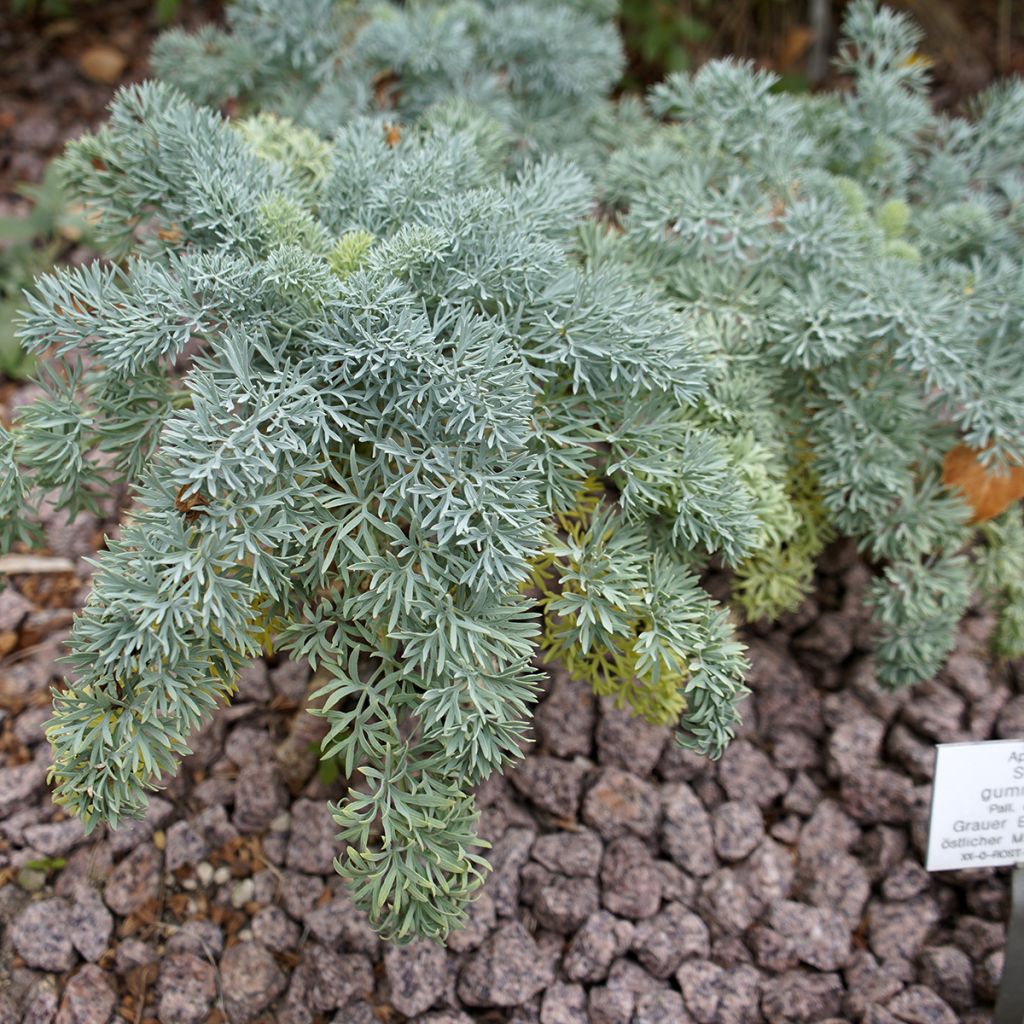

Seseli gummiferum
Seseli gummiferum
Seseli gummiferum
Moon Carrot
This item cannot be shipped to the selected country
Delivery charge from €5.90
More information
Schedule delivery date,
and select date in basket
This plant carries a 12 months recovery warranty
More information
We guarantee the quality of our plants for a full growing cycle, and will replace at our expense any plant that fails to recover under normal climatic and planting conditions.
From €5.90 for pickup delivery and €6.90 for home delivery
Express home delivery from €8.90.
Does this plant fit my garden?
Set up your Plantfit profile →
Description
The Seseli gummiferum, also known as Gum Seseli, is an architectural plant from the Apiaceae family, related to the humble garden carrot. It is undoubtedly the silver colour of its feathery foliage and its beautiful white summer flowering in large umbels that have earned it the poetic nickname of "moon carrot". Often biennial, this perennial plant compensates for its short lifespan with its beauty and its ability to easily self-seed in the garden. With great sobriety, it tolerates limestone and very dry soils in summer, making it a perfect fit for a waterless garden. It can be planted in a rockery, a flower bed, or a dry meadow.
The Seseli gummiferum is a tall herbaceous plant native to southwest Asia (Middle East, Black Sea, Crimea, Aegean). In the wild, this botanical species grows in mountainous areas on rocky cliffs up to 1,000 meters above sea level. It has good cold resistance, reaching temperatures as low as -12 °C in well-draining soil. With rapid growth, the plant usually dies after producing its seeds, after 2 to 4 years of cultivation. It has a deep-rooted root system and does not like to be disturbed. Ultimately, its vegetation reaches a height of 70 cm to 1.20 m, depending on the climate and growing conditions. It has an upright habit and develops a basal rosette of finely lobed, hairy, grey to silver leaves in summer, as well as a thick and branched, leafy stem with sap that resembles a rubbery gum. The spectacular flowering lasts several weeks between July and late August or early September. At the end of the stems, umbels measuring 10 to 12 cm in diameter bloom. Each umbel comprises almost spherical umbellules consisting of numerous tiny white or sometimes slightly pinkish flowers. This flowering attracts a large number of pollinating insects. Many brown seeds are produced, reaching maturity from August to October.
Fall under the spell of this moon carrot, as it is a majestic, light, and luminous plant, relatively hardy in porous soil. Plant it in a large sunny flower bed alongside tall thistles like cardoon (Cynara cardunculus) or wild teasel (Dipsacus fullonum), with dry soil grasses, yarrows, and Centaurea pulcherrima. All these plants have a rustic charm and can tolerate the same growing conditions. Well adapted to poor and rocky soils, very dry in summer, Seseli gummiferum will be magnificent in a large rockery or on a large slope reserved for dry soil plants (lavenders, rosemary, rockroses, spurges, teucriums).
Report an error about the product description
Seseli gummiferum in pictures
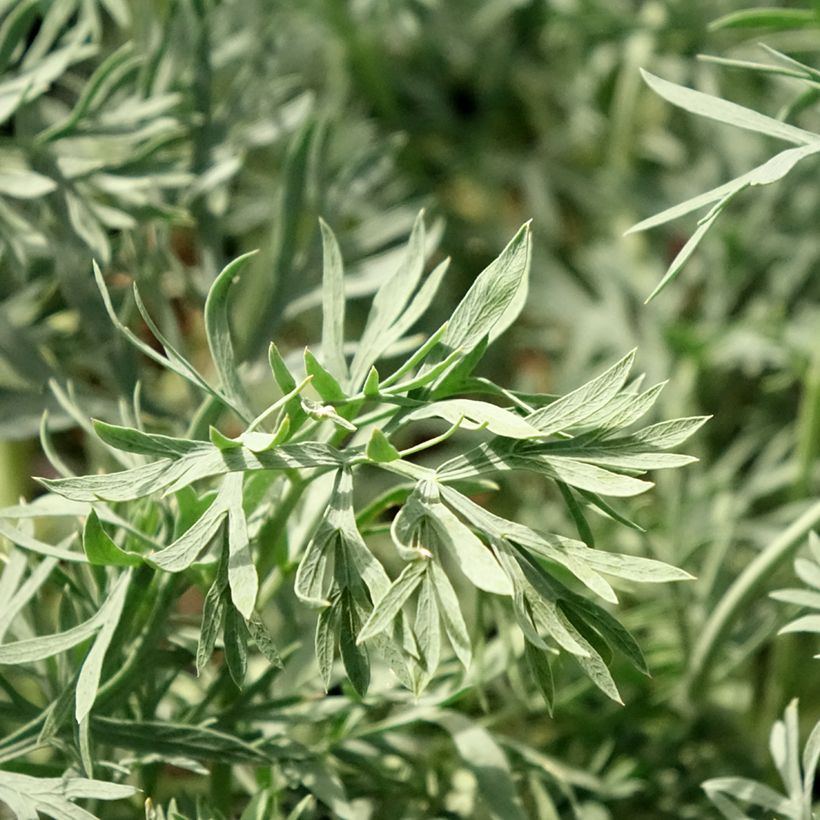

Flowering
Foliage
Plant habit
Botanical data
Seseli
gummiferum
Umbelliferae
Moon Carrot
Middle East
Other Perennials A to Z
Planting and care
Plant the moon carrot in spring or late summer in well-drained soil and even limestone, loamy, sandy, stony, and relatively poor. Choose a sunny exposure. The plant will withstand -10/-12°C at its peak under these growing conditions, with its foliage possibly becoming partially deciduous in case of extreme cold. Its inflorescence is very sturdy and withstands windy exposures very well. It is advisable to remove faded umbels to extend the plant's lifespan a little. Spontaneous sowings are frequent in light soil, and young seedlings will take at least two years before flowering.
Planting period
Intended location
Care
This item has not been reviewed yet - be the first to leave a review about it.
Haven't found what you were looking for?
Hardiness is the lowest winter temperature a plant can endure without suffering serious damage or even dying. However, hardiness is affected by location (a sheltered area, such as a patio), protection (winter cover) and soil type (hardiness is improved by well-drained soil).

Photo Sharing Terms & Conditions
In order to encourage gardeners to interact and share their experiences, Promesse de fleurs offers various media enabling content to be uploaded onto its Site - in particular via the ‘Photo sharing’ module.
The User agrees to refrain from:
- Posting any content that is illegal, prejudicial, insulting, racist, inciteful to hatred, revisionist, contrary to public decency, that infringes on privacy or on the privacy rights of third parties, in particular the publicity rights of persons and goods, intellectual property rights, or the right to privacy.
- Submitting content on behalf of a third party;
- Impersonate the identity of a third party and/or publish any personal information about a third party;
In general, the User undertakes to refrain from any unethical behaviour.
All Content (in particular text, comments, files, images, photos, videos, creative works, etc.), which may be subject to property or intellectual property rights, image or other private rights, shall remain the property of the User, subject to the limited rights granted by the terms of the licence granted by Promesse de fleurs as stated below. Users are at liberty to publish or not to publish such Content on the Site, notably via the ‘Photo Sharing’ facility, and accept that this Content shall be made public and freely accessible, notably on the Internet.
Users further acknowledge, undertake to have ,and guarantee that they hold all necessary rights and permissions to publish such material on the Site, in particular with regard to the legislation in force pertaining to any privacy, property, intellectual property, image, or contractual rights, or rights of any other nature. By publishing such Content on the Site, Users acknowledge accepting full liability as publishers of the Content within the meaning of the law, and grant Promesse de fleurs, free of charge, an inclusive, worldwide licence for the said Content for the entire duration of its publication, including all reproduction, representation, up/downloading, displaying, performing, transmission, and storage rights.
Users also grant permission for their name to be linked to the Content and accept that this link may not always be made available.
By engaging in posting material, Users consent to their Content becoming automatically accessible on the Internet, in particular on other sites and/or blogs and/or web pages of the Promesse de fleurs site, including in particular social pages and the Promesse de fleurs catalogue.
Users may secure the removal of entrusted content free of charge by issuing a simple request via our contact form.
The flowering period indicated on our website applies to countries and regions located in USDA zone 8 (France, the United Kingdom, Ireland, the Netherlands, etc.)
It will vary according to where you live:
- In zones 9 to 10 (Italy, Spain, Greece, etc.), flowering will occur about 2 to 4 weeks earlier.
- In zones 6 to 7 (Germany, Poland, Slovenia, and lower mountainous regions), flowering will be delayed by 2 to 3 weeks.
- In zone 5 (Central Europe, Scandinavia), blooming will be delayed by 3 to 5 weeks.
In temperate climates, pruning of spring-flowering shrubs (forsythia, spireas, etc.) should be done just after flowering.
Pruning of summer-flowering shrubs (Indian Lilac, Perovskia, etc.) can be done in winter or spring.
In cold regions as well as with frost-sensitive plants, avoid pruning too early when severe frosts may still occur.
The planting period indicated on our website applies to countries and regions located in USDA zone 8 (France, United Kingdom, Ireland, Netherlands).
It will vary according to where you live:
- In Mediterranean zones (Marseille, Madrid, Milan, etc.), autumn and winter are the best planting periods.
- In continental zones (Strasbourg, Munich, Vienna, etc.), delay planting by 2 to 3 weeks in spring and bring it forward by 2 to 4 weeks in autumn.
- In mountainous regions (the Alps, Pyrenees, Carpathians, etc.), it is best to plant in late spring (May-June) or late summer (August-September).
The harvesting period indicated on our website applies to countries and regions in USDA zone 8 (France, England, Ireland, the Netherlands).
In colder areas (Scandinavia, Poland, Austria...) fruit and vegetable harvests are likely to be delayed by 3-4 weeks.
In warmer areas (Italy, Spain, Greece, etc.), harvesting will probably take place earlier, depending on weather conditions.
The sowing periods indicated on our website apply to countries and regions within USDA Zone 8 (France, UK, Ireland, Netherlands).
In colder areas (Scandinavia, Poland, Austria...), delay any outdoor sowing by 3-4 weeks, or sow under glass.
In warmer climes (Italy, Spain, Greece, etc.), bring outdoor sowing forward by a few weeks.

































